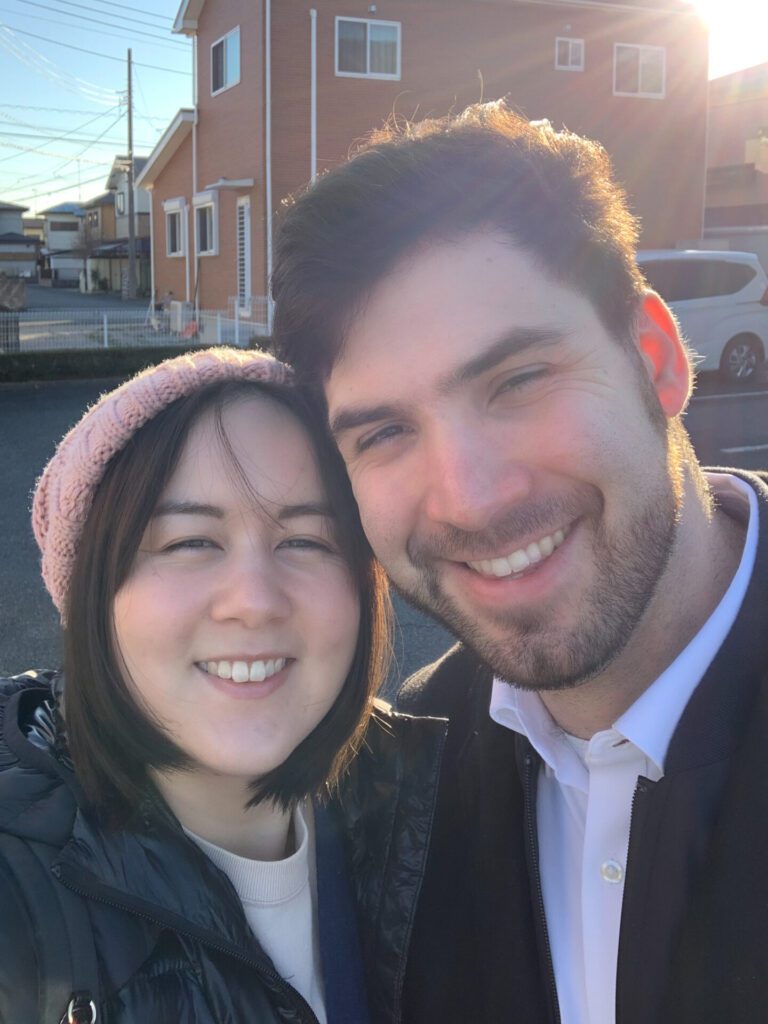In Japan, people ring in the New Year literally. Many people will go to a local temple where monks ring a giant bell in order to dispel the sins of the year.
Called “Omisoka” 大晦日, December 31st is a day where Buddhist temples across Japan ring their bell 108 times in order to cleanse the “108 worldly passions”.
When we celebrated New Year’s Eve in Japan during my study abroad days, we were even allowed to ring the bell ourselves!

Ringing the Bell at Zojoji Temple
Since we lived in an apartment owned by a temple, we were kindly invited to celebrate Omisoka with them at 増上寺 Zojoji Temple.
The High Priestess was able to secure us spots to ring the bell (which I think must have been reserved in advance, though I’m not clear on the details).
We went by car to Zojoji, which is situated right beneath the Tokyo Tower. It’s a gorgeous view with the glittering tower in the distance.
There was lots of hustle and bustle, and several food stalls (屋台 yatai) with classics like yakisoba and chocolate-covered bananas, but also seasonal favorites like warm amazake (a sweet fermented rice drink).
We walked around, had some snacks and dinner, then made our way to the site of the bell.

When it came time, we lined up around the dais, and waited our turns to ring the bell.
You ring it with three other people and a monk so it’s easier to control, and to avoid double-ringing. Seriously, they have it down to a science.
Regrettably I don’t have any video of myself, so you’ll have to enjoy a clip of others ringing it instead!

It has a deep, clear ring, and it would be soothing if it weren’t so close-up! Listening to it again, I’m instantly transported back to that moment.
If you get the chance to ring the bell on New Year’s Eve, I highly recommend doing it!
The first Shrine Visit: Hatsumode

In the first few days following new year, people flock to shrines for their first visit (初詣 Hatsumode). It can be hectic and busy, but rest assured you’ll make it to the top to say a prayer.
Visiting shrines is a way to get good luck for the year ahead, and bring in old good luck charms to renew, which will be burned in order to be purified.
In 2018, it was absolutely packed on the way to 浅草寺 Sensoji Shrine in Asakusa, but it was so worth it.
The packed roads feel full of excitement and hope for the year to come, and it’s a nice feeling to enjoy walking in the brisk air with other shrine-goers.
And once you reach the main shrine, you can copy other people’s gestures – throwing in a coin, bowing, clapping twice, and silently thinking your prayer.
Once you’ve finished your prayer, the first shrine visit’s also a great time for pulling your fortune, or おみくじ omikuji, to see what the year has in store for you.

New Year’s Food: Osechi Ryori

Osechi Ryori is a traditional set of foods eaten on New Year’s Day in Japan. It’s several prepared, often pickled, foods that everyone can enjoy. And a big plus is that no one has to cook.
Since a lot of time is spent cleaning in anticipation of the New Year, Osechi Ryori allows everyone to have a restful day come the new year.
Again, we were lucky to be able to try Osechi Ryori at the Temple’s behest. I’ll admit some of the foods weren’t my favorite, but I think it’s a case of acquired tastes.
Dondoyaki
Something I learned about in the last month of 2023 was the after-New-Year’s clean up, Dondoyaki (どんど焼き)!
As a way of getting rid of New Year’s decorations in a way that pleases the gods, people throw them in what is essentially a giant bonfire!
Like discarding old good luck charms, this serves the purpose of pleasing the gods, while also allowing you to rid your home of its decor in a sort-of offering.
How did you celebrate New Year’s this year?




